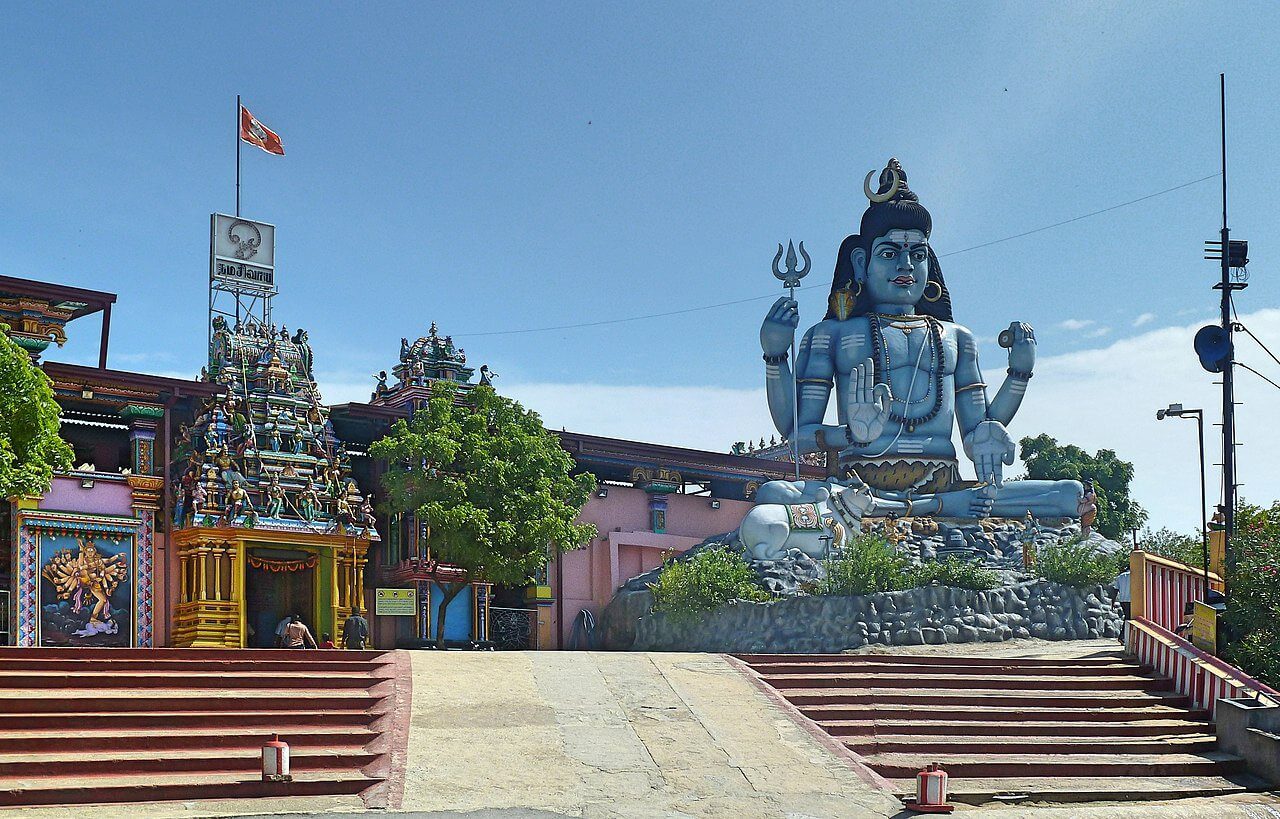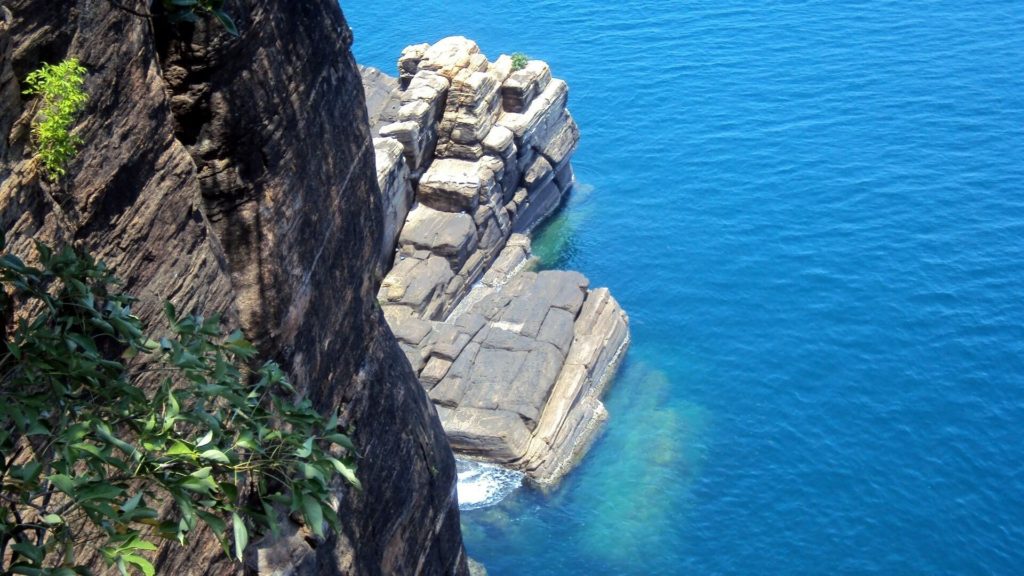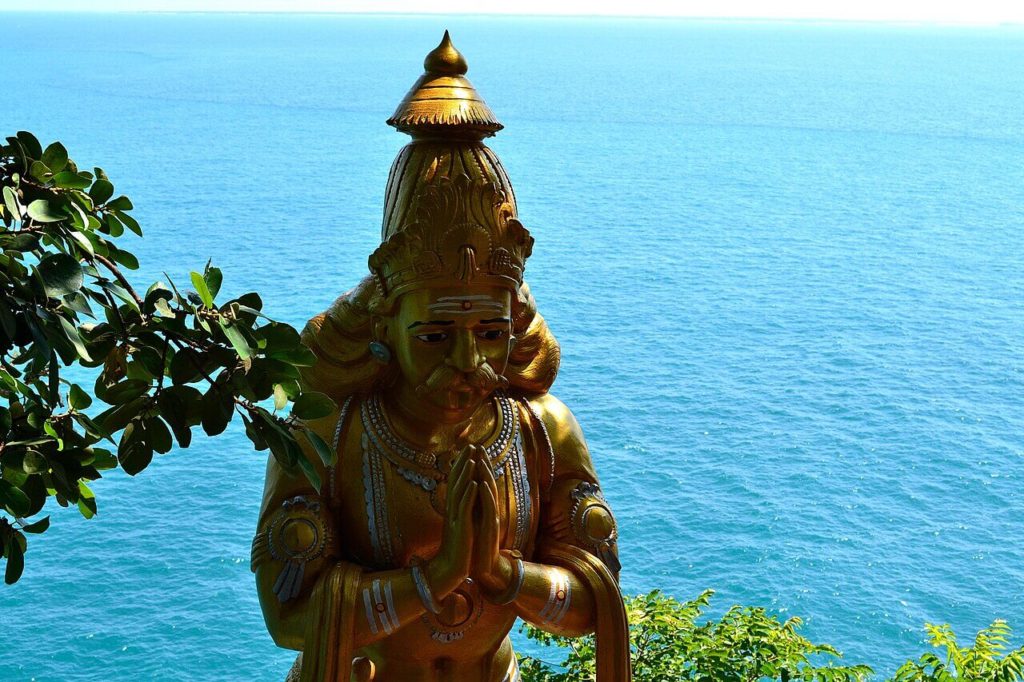Koneswaram: Where Gods, Kings, and Oceans Meet

“Trincomalee, Temple Koneswaram consacré à Vishnou” by Pierre André Leclercq, via Wikimedia Commons, licensed under CC BY-SA 4.0.
A Cliffside Wonder Where Legends Live
Imagine standing on a rocky cliff, the scent of incense mixing with the salty sea breeze. Below you, the vast Indian Ocean stretches out in a brilliant, impossible blue. Behind you, the sound of temple bells echoes from a shrine that has been a beacon of faith for thousands of years. This is Koneswaram temple in Trincomalee, a place that isn’t just beautiful—it’s alive with history.
Perched atop Swami Rock, this ancient Hindu temple is a vibrant tapestry of myth, colonial history, and stunning natural beauty. It’s a place where you can feel the weight of centuries with every step. For history lovers, Koneswaram isn’t just a destination; it’s a story waiting to be read, written in stone, sea, and faith.
The Traveler’s Guide to Koneswaram
Best Time to Visit
The best time to visit Trincomalee is during its dry season, from May to October. During these months, the sun shines brightly, the seas are calm, and the sky is a perfect blue, making the views from the temple absolutely breathtaking.
However, don’t discount the monsoon season (November to February). While you might get some rain, the landscape becomes lush and green, and the clouds add a dramatic, moody atmosphere to the cliffs.
For a truly deep cultural experience, try to visit during the Mahashivaratri festival (usually in February or March). The temple comes alive with thousands of pilgrims, ancient rituals, and an energy that is simply unforgettable. The whale-watching season also overlaps from March to August, giving you a chance to see magnificent blue whales in the waters below the temple.

What to Do: A Journey Through Time
- Walk Through Fort Frederick: Your journey to Koneswaram begins by passing through Fort Frederick, a sprawling fort built by the Portuguese and later controlled by the Dutch and British. As you walk, you’ll be greeted by friendly spotted deer who roam freely—a peaceful contrast to the fort’s military past.
- Explore the Koneswaram Temple: As you reach the end of the promontory, the vibrant colors of the Koneswaram kovil (temple) appear. Remember to remove your shoes and cover your shoulders and knees (sarongs are usually available to borrow). Admire the massive statue of Lord Shiva, feel the cool stone under your feet, and take in the panoramic views of the ocean.
- Stand at Lover’s Leap: Just beside the temple is a sheer cliff known as Lover’s Leap. While its name comes from a tragic colonial-era legend, today it’s a place for quiet reflection and one of the most stunning photo opportunities in Sri Lanka.
- Discover Hidden Shrines: Don’t just stick to the main path. Wander around the complex and you’ll find smaller shrines and statues tucked away, each with its own story.
Getting Around
Trincomalee is well-connected. You can take a scenic (but long) train ride from Colombo, a budget-friendly bus, or hire a private car for more comfort.
Once you’re in Trincomalee, the easiest way to get to Fort Frederick and other local sites is by tuk-tuk. They are everywhere and affordable. Just be sure to agree on a price with the driver before you start your journey.
Travel Tips
- Dress with Respect: Koneswaram is a deeply religious site. Both men and women should wear clothing that covers their shoulders and knees. It’s wise to carry a scarf or sarong with you.
- Be a Mindful Photographer: While photography is allowed in most areas, be respectful. Avoid using flash inside the shrines and always ask for permission before taking a picture of a person or a religious ceremony.
- Connect with Locals: A simple “Vanakkam” (hello in Tamil) and a smile can go a long way. The local vendors outside the fort sell everything from fresh mango to handmade crafts, and stopping for a chat is a great way to connect with the community.

Hidden Histories & Old Stories
Koneswaram is far older than its current structure suggests. The original temple, known as the “Temple of a Thousand Pillars,” was a colossal Dravidian architectural masterpiece. It was so grand that it was revered across Asia.
A Tale of Destruction and Rebirth: In 1624, the Portuguese, in a brutal act of colonial power, destroyed the magnificent temple completely, pushing its pillars and idols off the cliff and into the sea. For centuries, its glory was just a memory. But the story doesn’t end there. In the 1950s, divers, including the famous science fiction author Arthur C. Clarke, discovered ancient statues and columns on the seabed. Some of these priceless artifacts were recovered and are now housed in the new temple, a powerful symbol of resilience.
Whispers from Ancient Travelers: This site’s history is so deep, it is mentioned in the epic Ramayana. Legend says the temple was built by the sage Agastya and later worshipped by the mythical King Ravana. The earliest real-life travelers were 7th-century poets and pilgrims who immortalized the temple in the Tevaram, a collection of sacred Tamil hymns. Standing there today, you are part of an unbroken chain of visitors stretching back more than 1,500 years.
A Place Where the Past is Always Present
A visit to Koneswaram is more than just sightseeing. It’s a powerful experience that connects you to Sri Lanka’s soul. It’s feeling the sea spray on your face at Lover’s Leap, hearing the gentle chime of a prayer bell, and knowing you are standing on ground held sacred for millennia. When you leave, you take with you not just photographs, but a profound sense of history and peace.